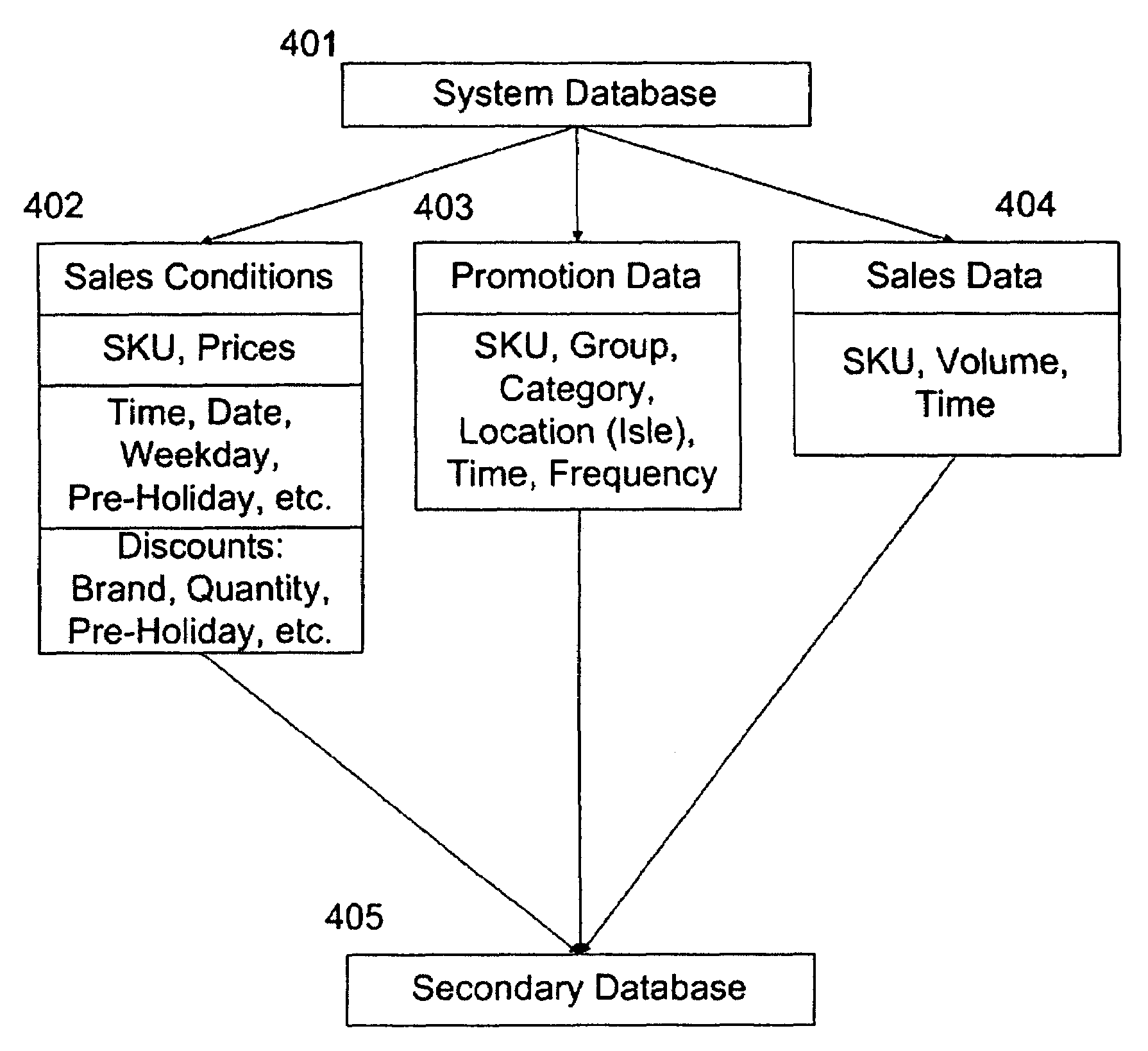System and method for profit maximization in retail industry
a profit maximization and retail industry technology, applied in the field of profit maximization system and method in retail industry, can solve the problems of insufficient historical data, difficult to accurately forecast the effectiveness of various promotional tools and price adjustments, and still be even more difficult to plan various marketing campaigns and pricing adjustments beforehand
- Summary
- Abstract
- Description
- Claims
- Application Information
AI Technical Summary
Problems solved by technology
Method used
Image
Examples
example
Clearance Pricing Optimization Problem
[0053]Suppose it is decided to sell out a number of product items in a supermarket within a particular target time period called clearance period, and to maximize the total revenue during that period by setting up optimal prices (for a theory for clearance sales, see, for instance Gupta, Hill, and Bouzdine-Chameeva, 2002). Along with adjusting prices, it is possible to use other means for enhancing sales like mobilizing in-store advertising means.
[0054]It is assumed that historical statistical data like scanner data are available on sales of those items for past periods. Besides sales volumes, those data are presumed to include the corresponding price levels, some concurrent external conditions that could affect sales volumes, for instance, time characteristics like season, day of the week, holidays, and also such factors as special discounts, advertising activities, etc.
[0055]A simpler version of this example will be selling a single product wh...
PUM
 Login to View More
Login to View More Abstract
Description
Claims
Application Information
 Login to View More
Login to View More - R&D
- Intellectual Property
- Life Sciences
- Materials
- Tech Scout
- Unparalleled Data Quality
- Higher Quality Content
- 60% Fewer Hallucinations
Browse by: Latest US Patents, China's latest patents, Technical Efficacy Thesaurus, Application Domain, Technology Topic, Popular Technical Reports.
© 2025 PatSnap. All rights reserved.Legal|Privacy policy|Modern Slavery Act Transparency Statement|Sitemap|About US| Contact US: help@patsnap.com



